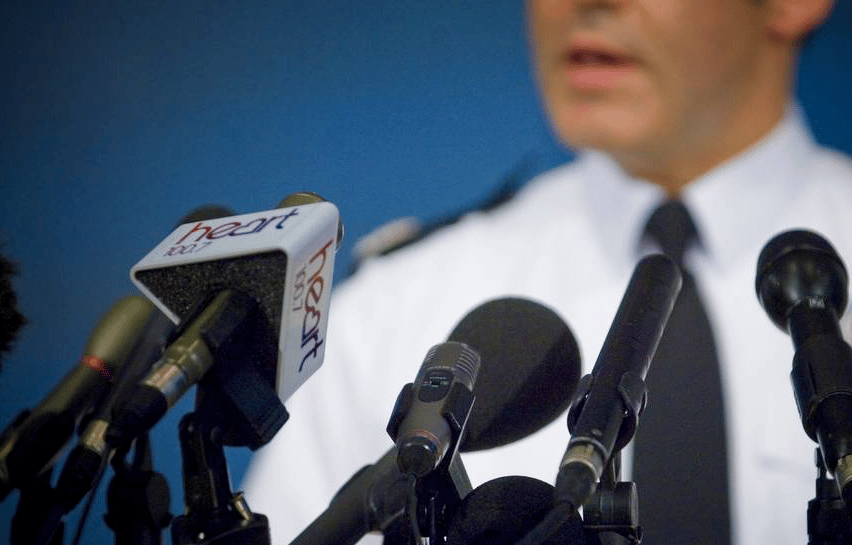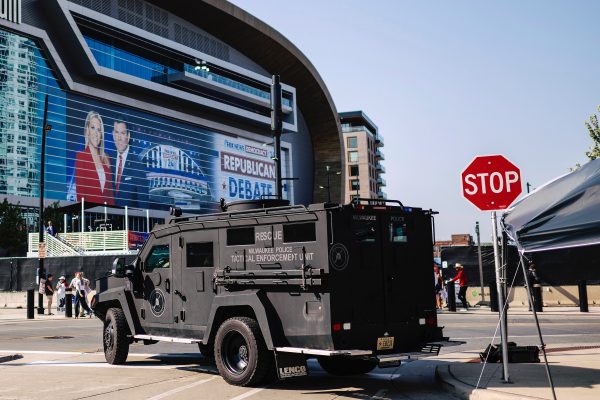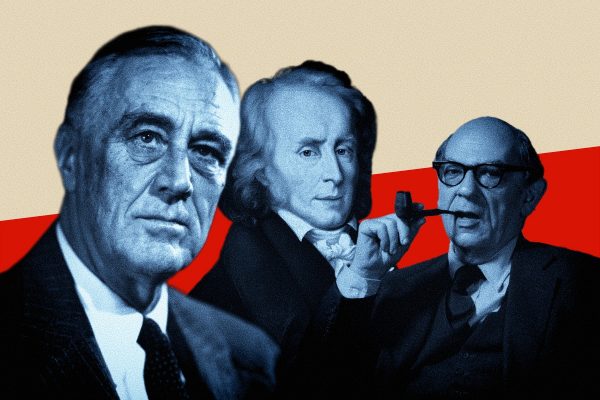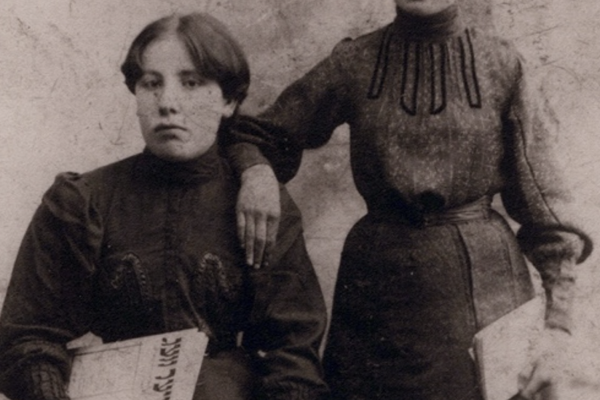Last October a horrifying story saturated local news in Philadelphia. A woman had been sexually assaulted on a train while surrounded by other passengers, and according to police, the onlookers saw the attack but did nothing to stop it. Speaking to the press, both police and officials from SEPTA, the regional rail authority, denounced the passengers for refusing to help the woman and instead recording the attack. “It speaks to where we are in society,” the local police superintendent lamented. “I mean, who would allow something like that to take place?”
But less than a week later, the story changed.
The local district attorney, Jack Stollsteimer, found that the police version of events was “simply not true” and pointed to a more complicated story: passengers moving on and off the train without clear awareness of the assault happening in their midst. Investigators confirmed that at least one person took a video of the attack, but they did so in order to document the incident as evidence for law enforcement.
Facing growing public outcry, the prosecutor and local police closed ranks, blaming SEPTA for spreading misinformation. Weeks later, SEPTA supplied a new story to the press: the transit police officer who arrested the alleged perpetrator relied on passenger witnesses who pointed him out “as soon as the train cars opened.” By the end of the news cycle, the conflicting statements had faded into irrelevance; instead the case was presented as another example of wanton violence, and grounds for still more policing.
For all the twists and turns of this case, two things stand out: a woman was sexually assaulted in a public place, and police initially lied about the circumstances. It is not just that the police made a mistake; they had access to the same surveillance footage as the local prosecutor but publicly asserted a baseless claim. Where exactly we draw the line between false claims and lies may not always be clear, but the difference between the two is often negligible, especially when measured in the harm they cause. The truth is that police do lie, all the time, about issues big and small. Police lie about their interactions, actions, and responses to people. They lie to their supervisors and on police reports to protect themselves and each other. They lie to prosecutors, juries, judges, and the public about perceived threats—the dangers posed by motorists, for example, and the use of force necessary to deter them. Indeed, police lie and fabricate evidence under oath so often that they have their own term for it: “testilying.”
These lies are more than morally wrong; they are politically and structurally significant. Police mendacity acts as critical accelerant for the carceral state, greasing the wheels of the legal system by generating arrests, extracting revenue from poor communities, justifying police violence, and shielding officers from accountability. The costs are incalculable. The impact of a single police lie can reverberate across generations, destroying countless lives and thousands of communities.
Some city leaders have responded by introducing new accountability measures to increase police transparency. San Francisco District Attorney Chesa Boudin, for example, recently adopted a sort of do-not-call list to prevent his office from filing charges based solely on the testimony of officers with histories of perjury. New York City, home to the largest municipal police force in the nation, uses a Civilian Complaint Review Board to unearth police lies and misconduct, though it lacks disciplinary power and oversight authority. In the summer of 2020, some proposed that police misconduct records should be made public, but only a handful of states embraced the idea.
Beyond their limited power, these efforts miss the mark for at least two reasons. First, the problem is not individual or sporadic but structural and endemic. Police don’t just lie because they can; they lie because it’s part of the job, and because they are structurally shielded from the consequences. Police perjury is a core function of policing, critical to both the viability of the institution and maintaining control over the public’s understanding of who should be feared and who should be protected. Second, police lie for both procedural and political reasons. Lies seed political narratives, as in Philadelphia. According to the Washington Post, police described the passengers’ lack of empathy—not the physical assault—as the “most ‘appalling’ part of the event.” By framing passengers as complicit or even guiltier than the accused rapist, police put forward a self-serving narrative about the essential role they play in public safety. That narrative fed into a larger ecosystem of political players working to paint Philadelphia as lawless and expand police power.
The political dimension of that lie matters. Police mendacity is not merely a problem of “bad apples” or individual interests. Instead, lying is an avenue for police to invest in a collective interest: disseminating political narratives that reinforce their indispensability. We need to reckon with police lies not only as a form of individual misconduct but as a matter of political speech. Failing to do so will keep us on a dangerous path, one where police—with the help of a too often deferential press—continue to fuel narratives that strengthen their power, budgets, and grip on the public’s imagination.
Because police officers enjoy enormous power and discretion in the United States, their lies take on different forms. In a recent New York University Law Review article, legal scholar Samuel Dunkle points to three core forms of procedural lies: testimonial perjury (“lies before a grand jury or a judge”), documentary perjury (“lies told under oath in an affidavit or criminal complaint”), and falsification of police records (“lies about facts and circumstances in arrest reports”). But police also regularly lie and manipulate facts to the press, implicitly setting the terms of public debate and manufacturing consent for greater policing—a fourth pattern of mendacity that also warrants scrutiny. These lies are connected, mutually reinforcing, and play a critical political function. As Dunkle writes, they are part of “a broader information ecosystem—one in which officers, police unions, legislators, activists, organizers and the public fight over what policing means and what purpose police serve.” Whether police lie within the confines of the legal system or lie to the press, the outcomes are strikingly similar; the public is reminded, as legal scholar Amna A. Akbar puts it, that “criminalization is for the collective good, and police are agents of public safety.”
One striking example that shaped the public safety discourse of the 1990s and 2000s is the case of the Exonerated Five, widely known as the Central Park Five. Antron McCray, Kevin Richardson, Yusef Salaam, Raymond Santana, and Korey Wise were barely teenagers when they were unjustly imprisoned for allegedly attacking a white Central Park jogger in 1989. The case, now an infamous example of mass incarceration at work, relied heavily on confessions now known to be false and secured with the help of coercive police practices.
We now know that NYPD officers (who can legally lie to suspects) used the teenagers to implicate one another and generate confessions. Fourteen-year-old Raymond Santana was told police had evidence against fifteen-year-old Kevin Richardson and would be able to go home if he agreed to build a case against him. Officers employed similar tactics with the other boys, pressuring them to position themselves as eyewitnesses to the crime and, ultimately, identify one another as perpetrators. After being detained and interrogated on and off for up to thirty hours, the boys confessed. They recanted their confessions before standing trial, citing police coercion, but it was too late. Despite any DNA evidence linking the teenagers to the crime, all five were convicted and spent between six and thirteen years in prison. After over a decade of maintaining their innocence, they were finally exonerated in 2002 when Matias Reyes, a convicted serial rapist and murderer, confessed and DNA evidence placed him at the scene of the crime.
There are two dimensions to the lies in this case. As a procedural matter, police lied to and manipulated the Exonerated Five, with horrific institutional outcomes (false confessions and unjust convictions), but they also—with the help of the press—ignited a political firestorm that kicked off a revitalized era of police expansion and mass incarceration. As the Exonerated Five sat in custody, police painted a terrifying picture to the media: an organized gang of schoolboys who— without remorse or premeditation—randomly assaulted, raped, and attacked people in Central Park, a pastime police called “wilding.”
“It’s not a term that we in the police have heard before,” the chief of detectives told reporters. “They just said, ‘we were going wilding.’ In my mind at this point, it implies that they were going to raise hell.” The phrase—and the meaning ascribed by police—dominated news coverage of the case and confirmed longstanding racist fears that Black men and boys are dangerous, deadly predators. The New York Post described “wilding” as “packs of bloodthirsty teens from the tenements, bursting with boredom and rage, roam[ing] the streets getting kicks from an evening of ultra-violence.” Several news outlets labeled the boys “bloodthirsty” “animals”—incapable of feeling pain, remorse, or empathy—who came “from a world of crack, welfare, guns, knives . . . a land with no fathers . . . to smash, hurt, rob, stomp, rape.” Donald Trump even paid for full-page ads in several New York papers, including the New York Times, exhorting officials to “Bring Back the Death Penalty. Bring Back Our Police!” The message was clear: Black children were menaces to society, and white people—especially white women—were in danger. This was not novel messaging, of course, but merely the continuation of centuries’ long efforts to paint Black people and their children as inherently violent and in need of social control.
The hysteria surrounding the case—fueled by police assumptions and narratives—helped give rise to the political rhetoric of the “super predator,” fueling draconian policing practices across all aspects of American life. As Americans struggled under rising unemployment, poverty, and violence, politicians like Joe Biden blamed “a cadre of young people . . . born out of wedlock, without parents, without supervision, without any structure, without any conscience developing . . . because they literally have not been socialized.” Police benefited from this narrative; the fear of Black children increased the scope, reach, importance, and funding of their work. Black schools overflowed with police, Black neighborhoods suffered under stop and frisk regimes, and Black children were arrested in masse and stood trial as adults more than “any other time in American history.”
Police powers and budgets continued to skyrocket with the passage of the 1994 Violent Crime Control and Law Enforcement Act, which Bill Clinton signed in the wake of Biden’s fearmongering about “predators on our streets.” Police weren’t the only beneficiaries; the entire prison system grew in size and scope, becoming the primary (and only legitimate) solution to the public health and safety crises of the ’90s. The Central Park Five case became a global phenomenon that fundamentally redefined the terrain of criminal justice landscape, and we are still feeling the effects of its impact. It crystallizes the way police use lies—both in their work and in the court of public opinion—to deploy a set of strategic narratives that bolsters their budgets, powers, and quest to be seen as the only means of safety available.
More than thirty years after the Central Park jogger case, police misconduct is more visible than ever before, yet police lying retains much of its power. Cell phones and social media regularly expose the gap between police accounts and reality, and body cameras are used by most major police departments in the United States. Indeed, public officials poured millions of dollars into body camera technology after the Ferguson uprising in 2014 in order to “enhance police transparency, accountability, and credibility,” as Attorney General Loretta Lynch said at the time. But technology hasn’t successfully reined in police misconduct. On the contrary, it has ballooned police budgets (not to mention the private surveillance industry’s profits) but failed to meaningfully change police behavior.
The persistence of police mendacity in spite of these efforts was on wide display in the summer of 2020, when between 15 and 26 million people took to the streets after the murders of George Floyd, Breonna Taylor, and Ahmaud Arbery. Police responded with an avalanche of violence. Protesters were attacked, tased, and beaten while officers lied about the circumstances. Police drove cars into crowds, blinded people with rubber bullets, destroyed medical tents, attacked reporters, and tear-gassed trapped protestors. A seventy-five-year-old man pleading with Buffalo police only to be violently shoved to the ground, blood pooling around his head as officers march in a tight line around his immobile body; local police officials described the attack as a “skirmish” in which “one person was injured when he tripped and fell.” And of course who could forget the Minneapolis Police Department’s initial statement omitting the chokehold that took George Floyd’s life and blaming his death on “medical distress?”
This tapestry of lies produced institutional and political outcomes. First, it funneled thousands of protesters into overcrowded jail cells as a deadly, hyper-contagious virus killed thousands of people per day. The Washington Post found that in the first two weeks following Floyd’s death, police arrested more than 17,000 people in the fifty largest cities that had organized protests. Most faced nonviolent misdemeanor charges, such as violating curfew or refusing to disperse, yet still were forcibly arrested, detained, and jailed in dangerously close quarters that facilitated the spread of COVID-19. Police engaged in such violent and in many cases illegal behavior that several departments are now facing lawsuits from protesters and prosecutors.
These actions, and the lies that justified them, played a critical narrative role as well. Amid the violence they inflicted on protesters, police officers declared themselves a persecuted group, physically in danger and under attack by Black Lives Matter demonstrators and the public. But this claim is not born out in the data. First and foremost, Black Lives Matter protesters were the primary victims of violence, often at the hands of police and white extremist groups (many of whom enjoyed police support). Second, police officers are not facing threats of existential proportions. According to the U.S. Bureau of Labor Statistics, there are more than 600,000 police officers in the United States. In 2020, 264 officers died in the line of duty, the majority of whom, 145, succumbed to COVID-19; 48 died in firearm-related incidents, and the majority of the remaining deaths were the result of traffic accidents. The numbers increased slightly in 2021, when 458 officers died in the line of duty: 301 due to COVID-19, 84 due to felony assaults (including 62 killed with firearms), 58 due to traffic-related incidents, and the rest due to a variety of other factors.
Every death is a tragedy. But it’s also true that these numbers do not reflect a state of open warfare against cops. Most police work is focused on nonviolent issues; only a very small percentage of police spend their time responding to violent crime—a fact at odds with our image of police as soldiers in a war defending Americans from “violent criminals.” In fact, many more civilians are endangered by police than police are by civilians. Police officers shot and killed 1,055 people in 2021 alone, a new record that throws the efficacy of recent reforms into question. Instead of addressing this discrepancy, law enforcement and public officials have rallied around the narrative of a growing “war on cops,” marshaling support from far-right media and the larger conservative political ecosystem.
This narrative gave birth to a political movement of its own, one led by former and current law enforcement and deeply rooted in white identity politics. “Blue Lives Matter” hit the scene in 2014 as a direct response to the Black Lives Matter movement, appropriating the slogan Black people created to assert their humanity and casting cops as the ones who were truly marginalized and threatened.
From the start, the movement embraced a potent combination of anger, racial resentment, and denialism. It channeled the political force of white conservative male rage in its rejection of the existence of racism, its treatment of multiracial campaigns for justice as destabilizing threats, and its claim that those holding the most structural and political power were the real victims. Law enforcement officials have disingenuously claimed that “Blue Lives Matter” is an apolitical movement—simply an effort to uplift fallen officers and promote respect for law enforcement—but the facts belie this assertion. White supremacists and neo-Nazis held the Blue Lives Matter flag as they marched through Charlottesville during the “Unite the Right” rally in 2017. Trump supporters also carried it proudly as they stormed the Capitol last year and even used it to beat officers—a revealing contradiction that exposes the true political interests of the movement. Police even use it to signal their loyalties in the aftermath of racial violence, as Minnesota officers did when one of their fellow officers mistook a taser for a gun and killed twenty-year-old Daunte Wright at a traffic stop.
We thus miss the significance of police narratives if we fail to see the way they are tied to a political agenda: the preservation of white racial power, police power, and the structural status quo. Recent years have made this political project explicit. In 2016 “Blue Lives Matter” bills flooded state houses, seeking to classify attacks on police as hate crimes. (The effort is largely redundant, as all fifty states already have increased penalties for assaulting an officer.) By the end of 2020, “Blue Lives Matter” bills almost exclusively focused on suppressing the Black Lives Matter movement and preserving police power.
These efforts amount to only the most recent manifestation of a lie long championed by police and running through U.S. history: the inherent criminality of Black social movements. State laws punishing cities for defunding the police are now on the books in Florida, Missouri, and Texas. Missouri passed a “police bill of rights,” which put limits on officer investigations and increased police protections for civil lawsuits.
Police unions are also spearheading anti-protest legislation in several states across the nation, including increased penalties for protest-related offenses (so that obstructing a sidewalk or street is now punishable by a year in jail), vague definitions of “riots” (deemed to be a gathering of three or more people that “threaten public safety”—property damage is not necessary, just “imminent danger to property” is enough to trigger an arrest), and legal protections for people who run over protesters with cars. More than 100 of these bills have been introduced in the last two years, and at least 16 have passed into law. Florida’s anti-protest law was so extreme that a federal judge blocked it, criticizing lawmakers for using the same racist tactics as Florida segregationists who used sweeping “anti-riot” laws to target civil rights protesters battling Jim Crow.
One final example of police mendacity is reshaping public discourse even as I write. As the social and economic impacts of the pandemic spiral into a rising national homicide rate, a coalition of law enforcement officials, lawmakers, and prosecutors is united in pointing reporters toward one primary cause: criminal justice reform. Many media outlets eagerly repeat this narrative or make it the default hypothesis, fueling popular skepticism of reform efforts and strengthening the power of police departments.
One popular target is bail reform. Just a few years ago, reforming the cash bail system—a global anomaly that exists only in the United States and the Philippines—was a popular criminal justice reform backed by a mountain of evidence. Keeping people in jail pretrial because of their inability to pay is racist, classist, and expensive; it criminalizes poverty, keeps millions of legally innocent people in jail, and has no measurable impact on public safety. Bail reform laws such as those in New Jersey, Chicago, and Philadelphia curtail mass incarceration by reducing or eliminating the use of cash bail for nonviolent offenses, while judges still retain discretion to set bail for a variety of circumstances, including for people charged with violent offenses. Studies show the reform is successful. People return to court at high rates, and the rate of rearrest for violent crime is extremely low. In Chicago, for example, violent re-offending rates after bail reform hover around 3 percent, and New York City data cast similar doubt on a reform-driven recidivism epidemic.
But police and public officials are now telling a different story: that bail reform allows violent criminals to walk free and fuels the national homicide rate. There is no evidence to support this theory, but the lie has driven a powerful political narrative, championed by policymakers across the political spectrum. In Chicago, Mayor Lori Lightfoot is trying to end pretrial release using a mixture of false claims and inaccurate data, even though her staff is apparently well aware that her arguments are not supported by Chicago data. In New York, meanwhile, the former head of the NYPD—who called the city’s lawmakers “cowards” for pursing police reform in 2020—linked the rise in shootings to bail reform in full contradiction of his department’s own data. Politicians, reporters, and law enforcement officials rallied to amplify the claim, and a general disregard of data colored the political fervor. “Putting aside the statistics . . . it’s common sense,” New York State Assembly Minority Leader, Will Barclay, told reporters. “You don’t let dangerous criminals back out on the street. I don’t need 100 statistics to prove to me it’s a bad policy.” This rhetoric proved successful; the state amended its bail law just three months after it went into effect. Several other states are now debating and reconsidering their bail laws, with many citing homicides as the primary concern.
The implications of this trend are severe, disguising racism as common sense and punishment as justice. Indeed, these lies have opened the door to a disturbing return to the discredited tactics of mass criminalization and incarceration. Both New York City and San Francisco have announced police crackdowns in response to escalating public health crises, with enthusiastic support from a corporate sector eager to regain pre-pandemic profits. As the New York Times reported, the head of the San Francisco tourism bureau sees an “image problem” and celebrated Mayor London Breed’s announcement of a state of emergency in Tenderloin, a majority Black neighborhood, to address a growing opioid and homelessness crisis.
“Too many people are dying in this city, too many people are sprawled on our streets,” Breed told the press; it was time to change course. But despite originally pledging to redirect police funds into Black communities, Breed increased police funding, presence, and surveillance in Tenderloin, calling on cops to clean up the neighborhood’s “nasty streets.” Health and housing advocates cited the already heavy police presence in the neighborhood and the well-documented dangers of criminalizing homelessness and addiction. Some reporters pointed to the gap between the mayor’s argument and the city’s crime rates (showing that most violent crime is down), but Breed rejected the data, saying, “the data doesn’t matter when somebody randomly walks up to you who is on crystal meth and socks you in the face and puts you in the hospital.”
Meanwhile, Eric Adams, former NYPD captain and now mayor of New York City, has adopted a similar approach in the aftermath of several high-profile shootings and a rising homicide rate. His recent “Blueprint to End Gun Violence” declares gun violence a public health crisis but includes little to no health response. There is a spattering of funds for holistic community investments—a few job training programs, some money for violence interrupter efforts—but the plan focuses mostly on scaling up police responses, increasing their funding, units, and patrols across the city. It even resurrects the NYPD’s notorious plainclothes unit, which was disbanded in 2020 for a pattern of unconstitutional tactics and killing unarmed Black New Yorkers.
For all their claims of holistic approaches, Adams’s and Breed’s plans reflect the principles of two bygone eras that dramatically expanded carceral power and decimated Black communities: the war on drugs and the war on crime. Demonizing and dehumanizing rhetoric has returned too. Breed claimed the police crackdown would “take back Tenderloin” from a “reign of criminals,” while Adams declared “it’s our city against the killers” after two NYPD officers were killed last month following a response to a domestic disturbance.
This rhetoric shows the power of police lies at work. All the while, police departments are benefiting; their ranks, budgets, and powers are growing. By baselessly linking reform efforts to the pandemic homicide spike, police officials have tipped the political scales in their favor, fueling a narrative that reform is a dire hindrance to public safety and poses an existential threat to law enforcement.
How do we break this cycle? If history is any guide, it’s not through procedural reform. Such efforts—whether aimed at technology, disciplinary penalties, or oversight bodies—have always come up short, and for unsurprising reasons: a largely autonomous system that relies on perjury to function is not likely to spend its time punishing individuals for lying. As philosopher Sissela Bok notes in her book Lying: Moral Choice in Public and Private Life (1978),
It would be wishful thinking . . . to expect individuals to bring about major changes in the collective practices of deceit by themselves. Public and private institutions, with their enormous power to affect personal choice, must help alter the existing pressures and incentives.
Legal remedies, for their part—such as ending qualified immunity—could help shift incentives and disrupt impunity, but they are likely to reinforce the “bad apples” fallacy, as well. The truth is that lying is a structural feature of policing, not an aberration. The ability to hold particular officers legally accountable does not threaten the systemic nature of police perjury any more than prosecuting officers for killing civilians has stopped police violence.
Instead, altering the full range of existing pressures and incentives will require looking beyond individual transgressions to the larger project of political manipulation that impedes reform efforts and limits the public’s imagination of how our society could be different. Acknowledging the political interests of police, both historically and today, is one step forward, but it’s not nearly enough. To strike at the heart of the problem, we must recognize that both procedural and political lies ultimately serve the same neoliberal economic goals. Lies beget investments, and investments in turn cannibalize public budgets and shape the type of care and support people can access. This distribution of resources deprives people of housing, jobs, food, and options, locking them into a vicious cycle of poverty, facilitating desperation and trauma, and in turn breeding more violence—the very situations that trigger police involvement.
Breaking this self-fulling prophecy requires confronting the way lying sustains the economic system that keeps police in power and communities in crisis. The solution lies not in punishing individuals or “stopping the lies,” but in fundamentally transforming the economic system they are in service of.









